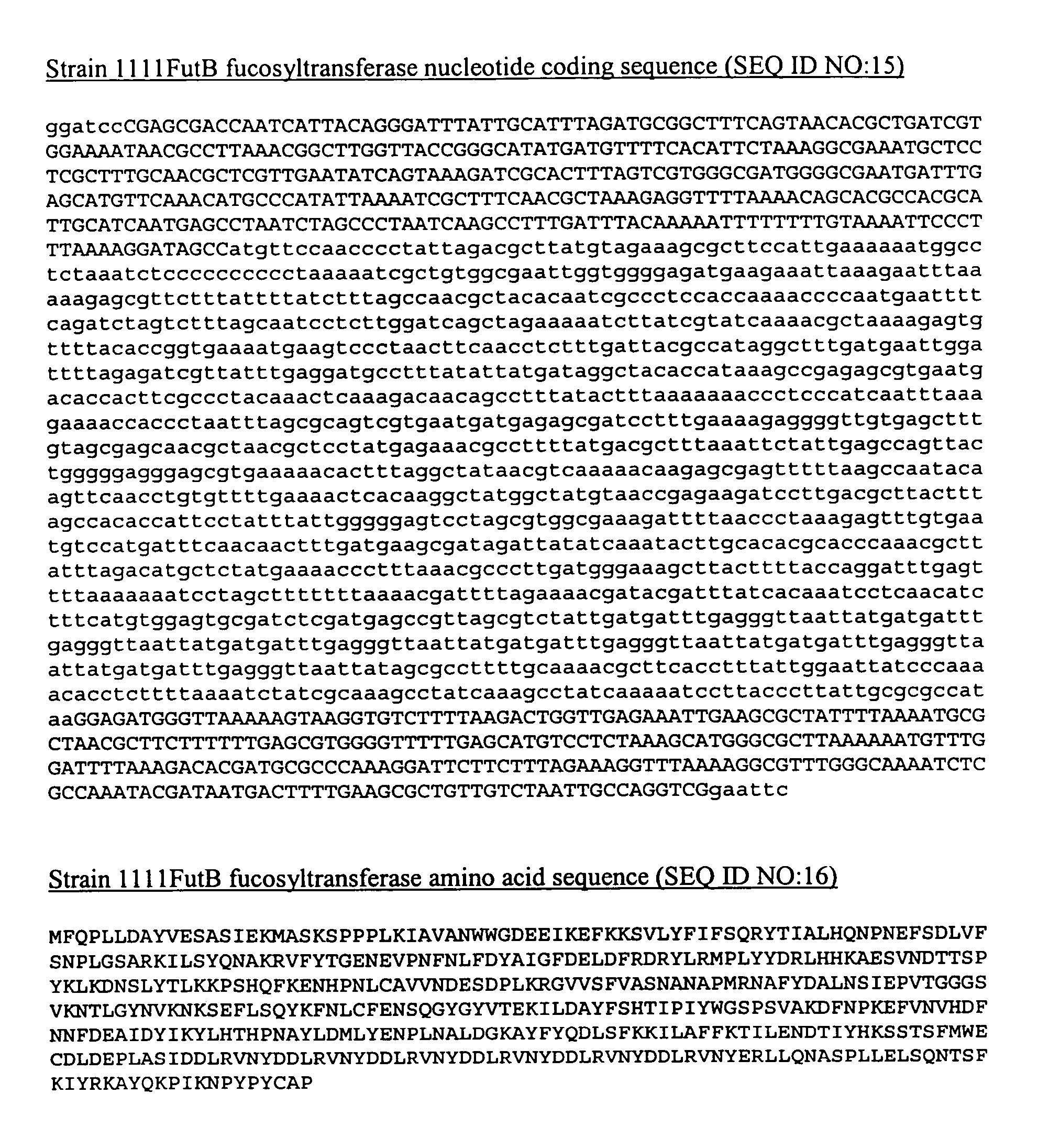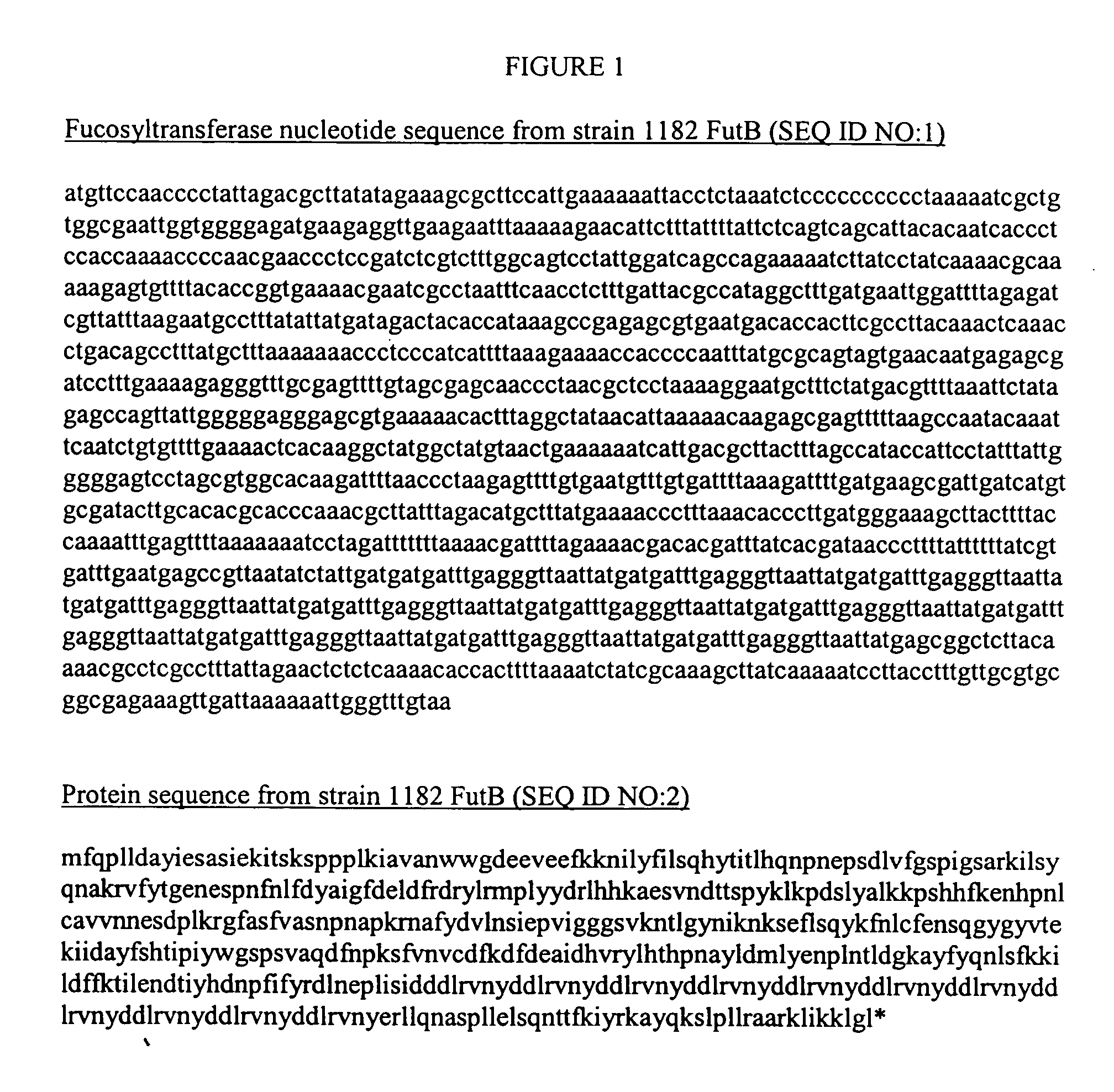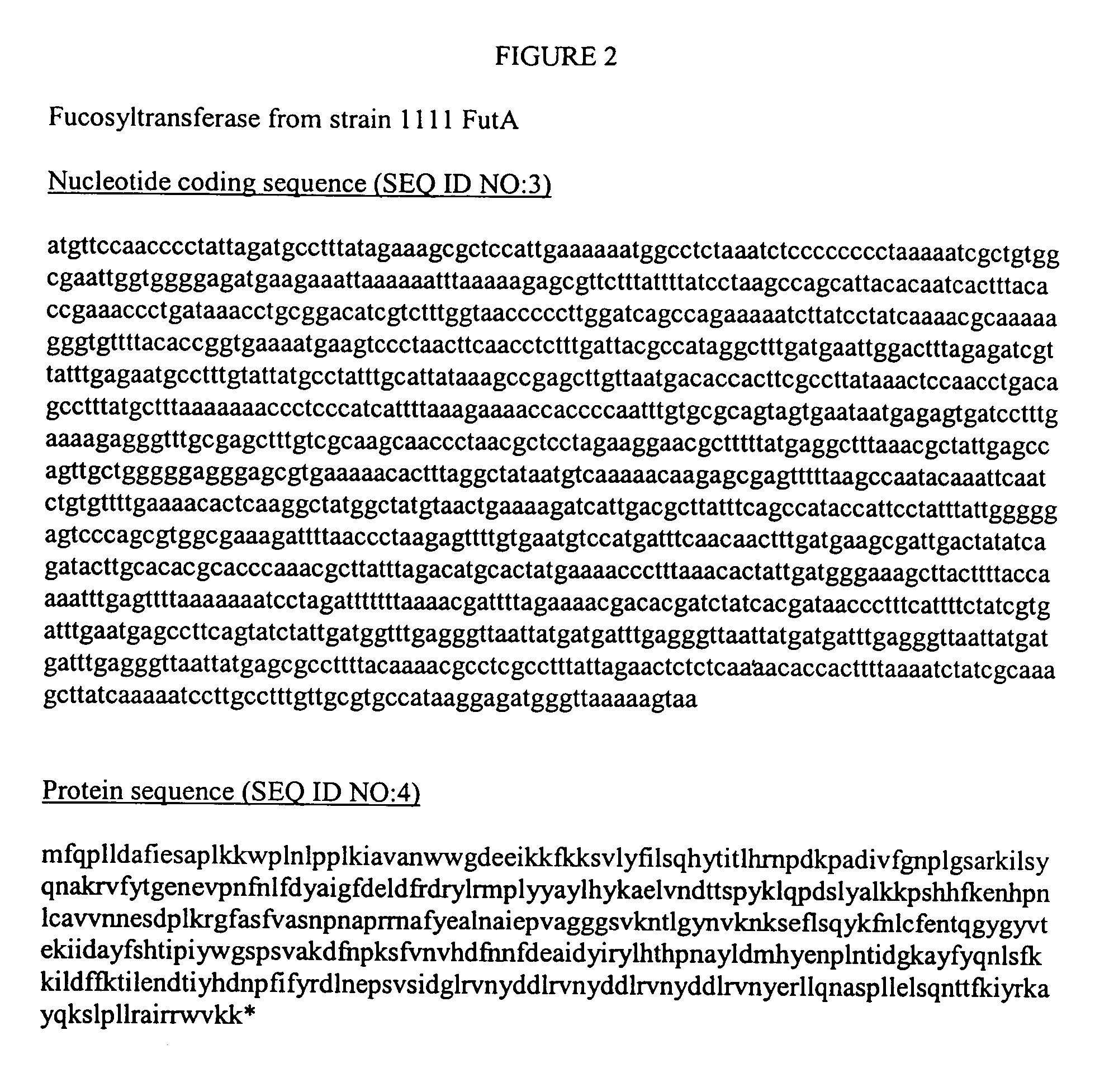H. pylori fucosyltransferases
a technology of helicobactor pylori and fucosyltransferases, which is applied in the direction of transferases, peptides, antibody medical ingredients, etc., can solve the problems of substantial difficulties in the chemical synthesis of glycoconjugates
- Summary
- Abstract
- Description
- Claims
- Application Information
AI Technical Summary
Problems solved by technology
Method used
Image
Examples
example 1
Cloning of Helicobacter pylori Fucosyltransferases
[0245] Putative fucosyltransferase genes from the following strains of Helicobacter pylori were PCR amplified, cloned into vectors for expression in E. coli: strain 915 FutA, strain 1111 FutA, strain 19C2 FutB, strain 1182 FutB, strain 19C2 FutA, strain 26695 FutA, and strain 1218 FutB. Nucleic acid and amino acid sequences are provided in FIGS. 1-7. An amino acid sequence alignment is provided in FIG. 12; a nucleic acid sequence alignment is provided in FIG. 13.
[0246] The putative fucosyltransferase proteins were screened for α1,3 / 4-fucosyltransferase activity using LNnT and GDP-fucose substrates. The oligostructures of LNnT and one product, LNFPIII are shown in FIG. 14.
[0247] One hundred milliliter cultures of E. coli transformed with H. pylori fucosyltransferase were grown to OD600 of 0.8 and induced with IPTG, and harvested. Cell lysates were made using a french press. The fucosyltransferase enzymes were tested for enzymatic a...
example 2
Production of Oligosaccharides Using Helicobacter pylori Fucosyltransferases
[0249] One liter cultures of E. coli expressing H. pylori fucosyltransferases were grown, induce and harvested. The lysates were used to synthesize LNFIII from LNnT. Two different ion exchange resins were tested for purification of LNFIII. Reaction mixtures were centrifuged at 5,000 RPM for thirty minutes. Samples were then processed by ultrafiltration using hollow fiber ultrafiltration membranes with a molecular weight cut off of 10 kD. Ion exchange chromatography was done using either MR3 NH4HCO3 column 1 ml resin per 1 ml synthesis (70%) or Dowex1 / Dowex50 column 2 ml resin per 1 ml synthesis (82%). Samples were then run on a P2 Size Exclusion column and then lyophilized. Results are shown in FIG. 16. Yields using the Dowex resin approached 50%, while yields from the MR3 NH4HCO3 column approached 70%.
[0250] LNFIII was prepared from lactose using lysates from E. coli cells expressing H. pylori α-1,3 / 4-fuc...
example 3
Production of Glycoproteins Using Helicobacter pylori Fucosyltransferases
[0251] The ability of fucosyltransferase from H. pylori strain 1182B to add fucose to acceptor molecules on glycoprotein was tested using asialyltransferrin as a substrate. The 1182B fucosyltransferase was produced in E. coli cells as described above. The reactions were carried out in a buffer containing 50 mM Tris pH. 7.5, 20 mM MnCl2, 200 μg asialyltransferrin, and 5 mM GDP-fucose. Reactions were started by adding 15% v / v of the bacterial lysate. The reaction was incubated overnight at 37° C. The samples were analyzed using GC / MS. Results are shown in FIG. 17.
PUM
| Property | Measurement | Unit |
|---|---|---|
| Fraction | aaaaa | aaaaa |
| Fraction | aaaaa | aaaaa |
| Fraction | aaaaa | aaaaa |
Abstract
Description
Claims
Application Information
 Login to View More
Login to View More - R&D
- Intellectual Property
- Life Sciences
- Materials
- Tech Scout
- Unparalleled Data Quality
- Higher Quality Content
- 60% Fewer Hallucinations
Browse by: Latest US Patents, China's latest patents, Technical Efficacy Thesaurus, Application Domain, Technology Topic, Popular Technical Reports.
© 2025 PatSnap. All rights reserved.Legal|Privacy policy|Modern Slavery Act Transparency Statement|Sitemap|About US| Contact US: help@patsnap.com



